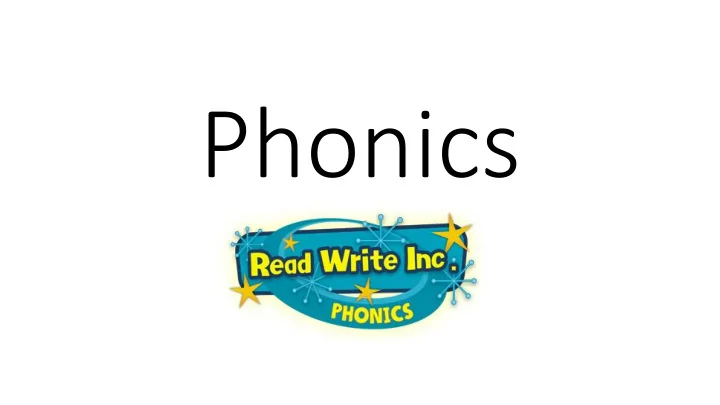

Phonics
Step 1: Listening to rhyme and rhythm • Hear rhyme in words • Continue a rhyming string • Hear and copy a rhythm • Create own rhythm • Hear rhythm (syllables) in words to help with spelling
Step 2: Learning single sounds Single letter sounds = All letters of the alphabet make a sound. *Words are made up of sounds called 'phonemes'. * Phonics teaches children to be able to listen carefully and identify the phonemes (sounds) that make up each word. This helps children to learn to read words and to spell words for writing. https://www.youtube.com/watch?v=EYx1CyDMZSc (ruth miskin pronounciation guide) Please try and use the pure sounds with your child. It is important that children say the sound of the letter, rather than saying the letter name at this stage.
Step 3- Some sounds are made up of more than one letter. Digraph = 2 letters together that make one sound e.g. ng, nk, th, sh, ch etc. Split digraph = a digraph is split by a consonant e.g. a_e in the word cake. Trigraph = 3 letters together that make one sound e.g. igh, ear, air.
Skills taught throughout all phonic stages Blending = This is when children say the sounds that make up a word and are able to merge the sounds together until they can hear what the word is. This skill is vital in learning to read. E.g. d-o-g = dog
Blending with Fred the Frog Fred Talk - Fred the frog helps during phonics lessons. Fred the frog only speaks in sounds e.g. c-a-t. In school we use Fred to help us blend sounds to read words, Fred says the sounds in words and the children have to blend the sounds together to say the word aloud. E.g. Fred says, "d-o-g" the children say "dog".
Skills taught throughout all phonic stages Segmenting = This is the opposite of blending. Children are able to say a word and then break it up into the phonemes that make it up. This is vital in being able to spell words for writing. E.g. mat = m-a-t
Fred Fingers - Fred helps children learn to spell words as well! Children segment words into sounds using Fred Fingers. They use their fingers to represent each sound in a word. The children identify how many sounds in a word and then put that amount of fingers up in front of them, e.g. 3 sounds = 3 fingers. The children then press the tip of each finger while sounding out the word.
Red words: wo words s you can anno not sound nd out. Just need to learn them from memory. 25 red words to learn in year r. Children should be able to read and spell all 25 red words before starting year 1. 1. the 21. your 12. going 2. I 22. was 13. put 3. he 23. do 14. for 4. be 24. to 15. of 5. we 25. what 16. my 6. me 26. some 7. she 17. are 27. come 8. a 18. said 28. they 9. so 19. all 29. this 10. no 20. you 30. there 11. go
Recommend
More recommend